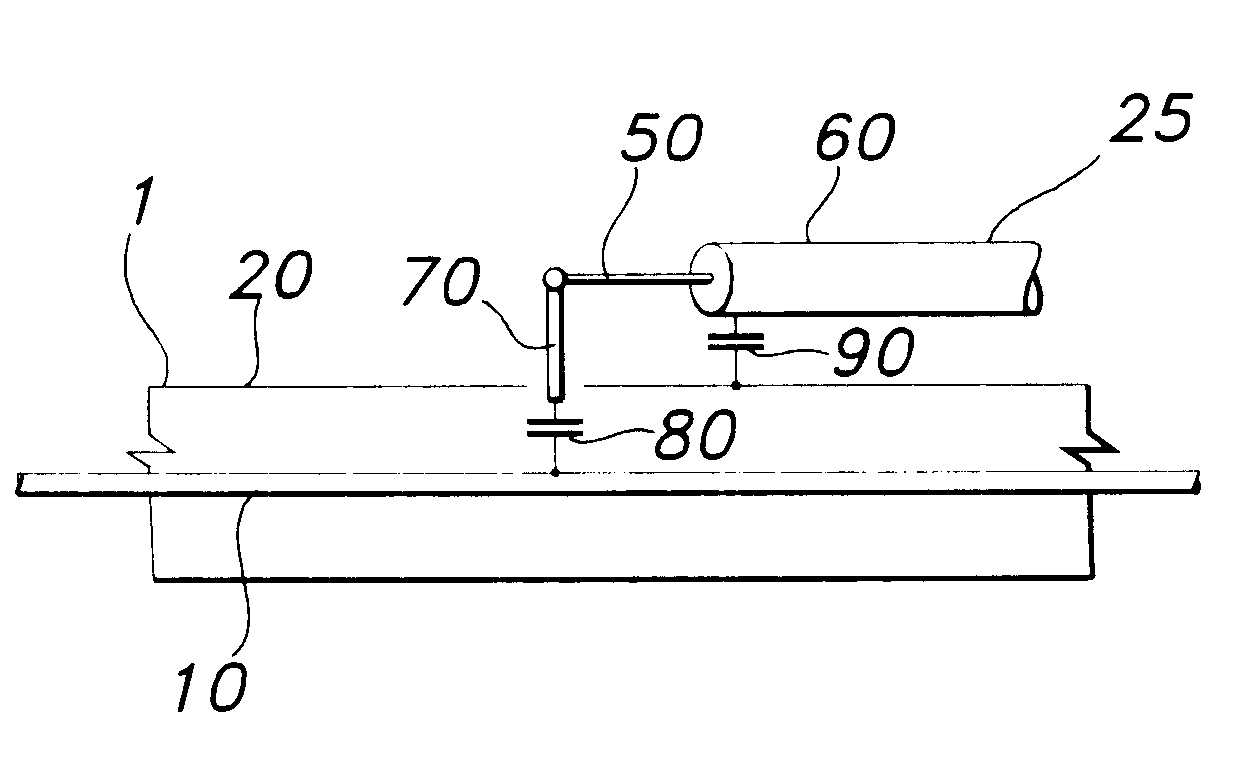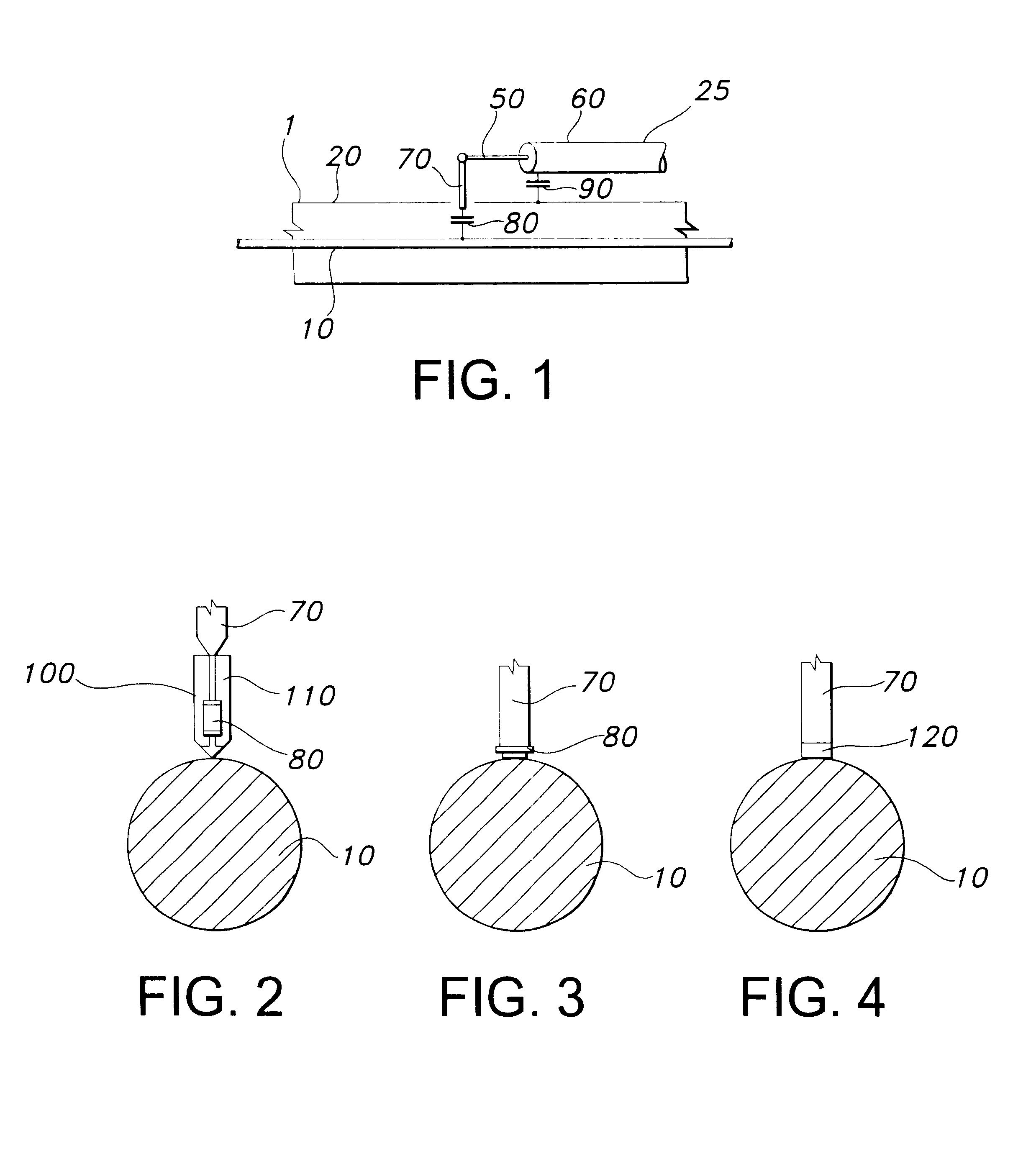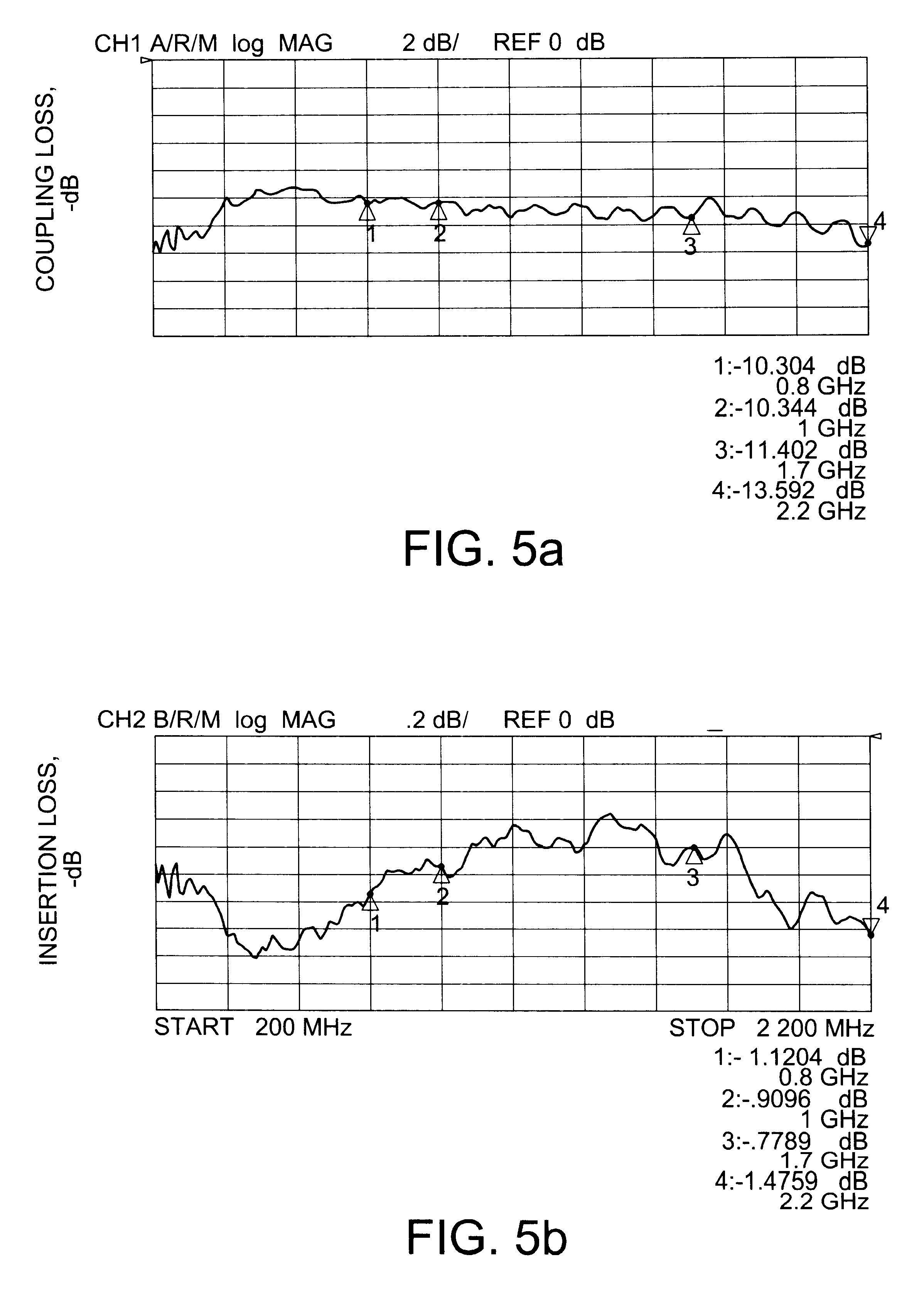Low loss cable coupler
a low-loss, cable coupler technology, applied in the direction of cable junctions, electric cable installations, coupling device connections, etc., can solve the problems of significant loss of insertion from a conventional center conductor contacting co-axial cable coupler, prohibitively expensive type of coupler, and significant impedance discontinuity of axial cable coupler with mismatch loss
- Summary
- Abstract
- Description
- Claims
- Application Information
AI Technical Summary
Benefits of technology
Problems solved by technology
Method used
Image
Examples
Embodiment Construction
As shown in FIG. 1, RF energy in a trunk cable 1 propagates in a space between a center conductor 10 and a surrounding outer conductor 20. To couple the RF energy into a second cable 25 having a second center conductor 50 and a second outer conductor 60, a probe 70 coupled with the second center conductor 50 is inserted through an aperture in the outer conductor 20, into mechanical contact with the center conductor 10. To minimize an impedance discontinuity as a result of contact by the probe 70 with the center conductor 10, a capacitor 80 may be located in-line between the center conductor 10 and second center conductor 50, on or along the probe 70, at a location between the center conductor 10 and the aperture in the outer conductor 20. The outer conductor 20 and the second outer conductor 60 may be coupled together directly or capacitively coupled by proximity or a second capacitor 90.
The capacitor 80 may be, for example, an approximately 1.0 picofarad capacitor. Various differen...
PUM
 Login to View More
Login to View More Abstract
Description
Claims
Application Information
 Login to View More
Login to View More - R&D
- Intellectual Property
- Life Sciences
- Materials
- Tech Scout
- Unparalleled Data Quality
- Higher Quality Content
- 60% Fewer Hallucinations
Browse by: Latest US Patents, China's latest patents, Technical Efficacy Thesaurus, Application Domain, Technology Topic, Popular Technical Reports.
© 2025 PatSnap. All rights reserved.Legal|Privacy policy|Modern Slavery Act Transparency Statement|Sitemap|About US| Contact US: help@patsnap.com



